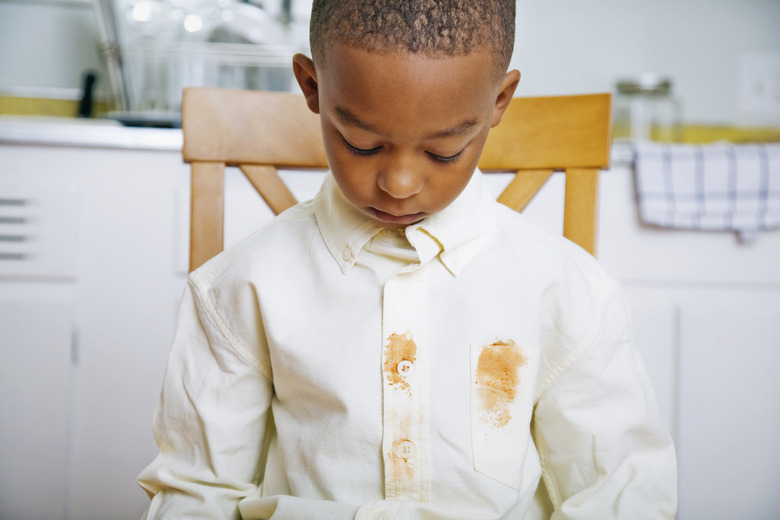Tough Stains: A Guide To Treating Clothing Stains
Stains happen. Everyone spills or finds themselves on the receiving end of a drip or smear. The longer a stain is on an item of clothing, the more time it has to penetrate the fibers. Dealing with a stain quickly and effectively can save an item of clothing from ruin.
How to Treat Light Stains
How to Treat Light Stains
Time is of the essence when it comes to marked clothes. Getting water on a stain as soon as it happens can mean a beloved piece isn't lost forever. Using a damp cloth, gently blot at the stain to lift as much off as possible. Avoid rubbing the stain as pressure can cause it to embed into the fibers. Spray it with a pretreatment spray and let it sit for at least an hour before laundering.
It's important not to put stained clothing in the dryer. A dryer's heat can lock in the stain and damage the item forever. If the stain is still visible after washing, let the garment dry naturally and treat it with laundry detergent or a pretreatment spray. Wet fabric isn't as absorbent as dry, so let the garment dry completely before continuing treatment. Repeat the process until the stain disappears.
Treating Tough Stains
Treating Tough Stains
Some types of stains require a deeper cleaning. For a tomato-based stain, dab on vinegar to remove as much as possible and launder as usual. The acid in citrus also fights tomato stains. Squeeze lemon juice onto the stain and let it sit for a few minutes to allow the stained fibers to absorb the lemon. Rinse by blotting with water on a damp cloth and wash as usual.
Chase a red wine stain with white wine. White wine neutralizes red wine and helps the stain to fade. Dab the white wine onto the stain until it's mostly removed and launder as usual. Salt is also helpful in wine stain removal. Pour the salt onto the stain and leave it to absorb the wine. When you're satisfied no more of the stain is coming off, go ahead and launder as usual.
Use liquid dish detergent to remove oil and grease. Put some dish detergent on a clean damp cloth and blot to lift the stain. After lifting as much of the stain as possible, cover it with the dish detergent and let sit for at least an hour or until you're ready to launder.
Soak blood, tea and coffee in cold water for at least an hour to loosen the stain. Spray the stain with a pretreatment spray and launder as usual.
Spray ink stains with hairspray and let the alcohol go to work. Leave it to absorb for 30 minutes to an hour and launder as usual, using a pretreatment spray if necessary.
Treating Different Fabrics
Treating Different Fabrics
Some fabrics are easier to treat and are more forgiving than others. Spot-treating silk by dabbing the stain with water can cause damage. Instead, loosen stains on silk by soaking the entire garment in cold water. Diluting a mild soap, such as dish soap or shampoo, with water and blotting the stain while the garment is wet can also help to loosen the stain before laundering.
Wool is sensitive to heat and warps easily. Lay a wool garment flat and dab with lukewarm water to loosen the stain. If needed, dab with a mild soap that can treat wool. Avoid using bleach or an acid based cleaner on wool because it will damage the fibers. After treating, launder as usual.
Cotton is very forgiving and responds well to most treatments. Blot stains with a damp cloth and use a pretreatment spray for stubborn stains. Let sit for an hour or more and launder as usual. Avoid using bleach.
Polyester can take a lot of abuse so you can use more elbow grease than with other fabrics. After blotting off as much of the stain as possible, launder as usual.
Avoid putting stained clothes in a dryer, and contact a dry cleaner for stains that won't go away.
